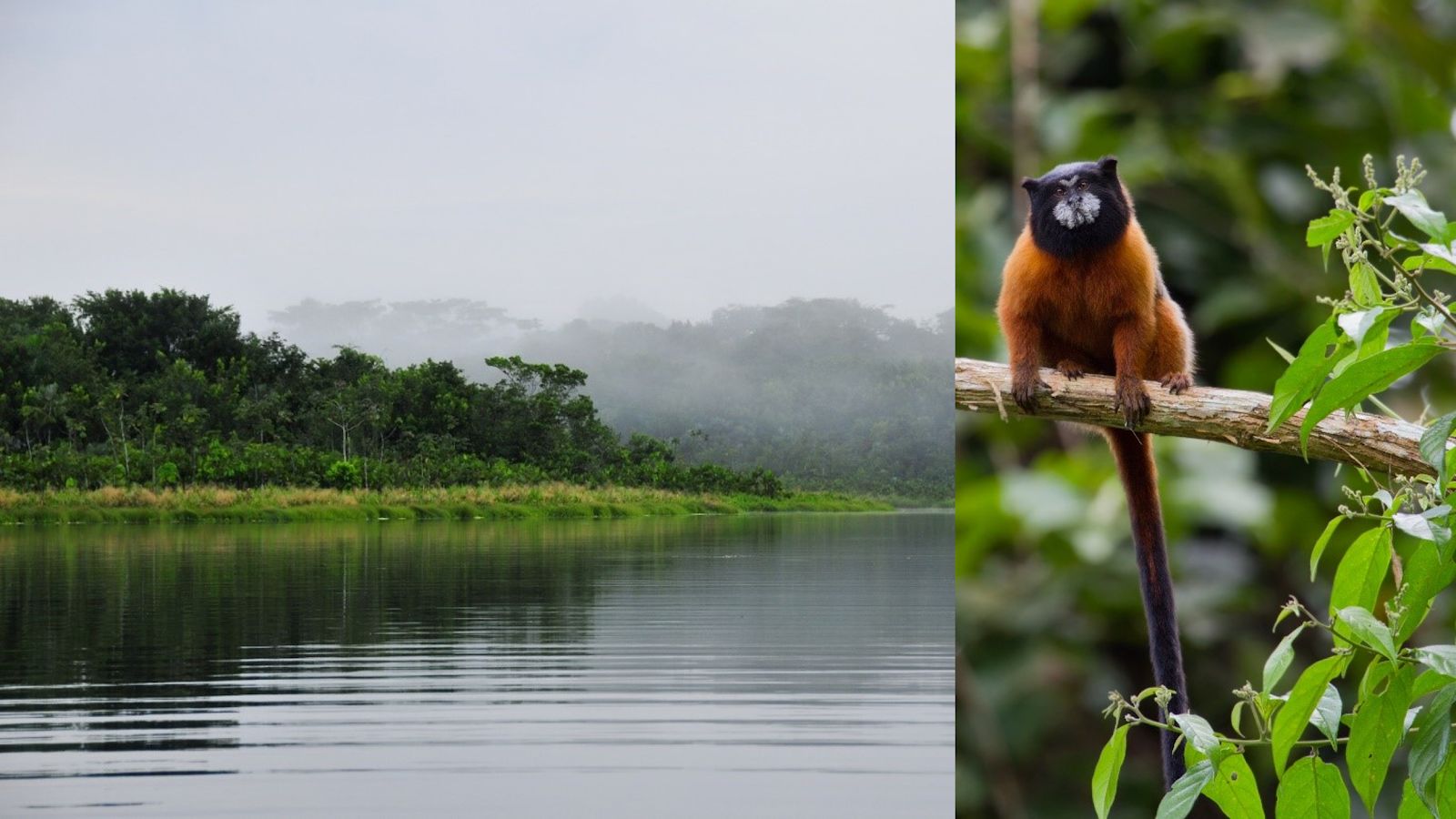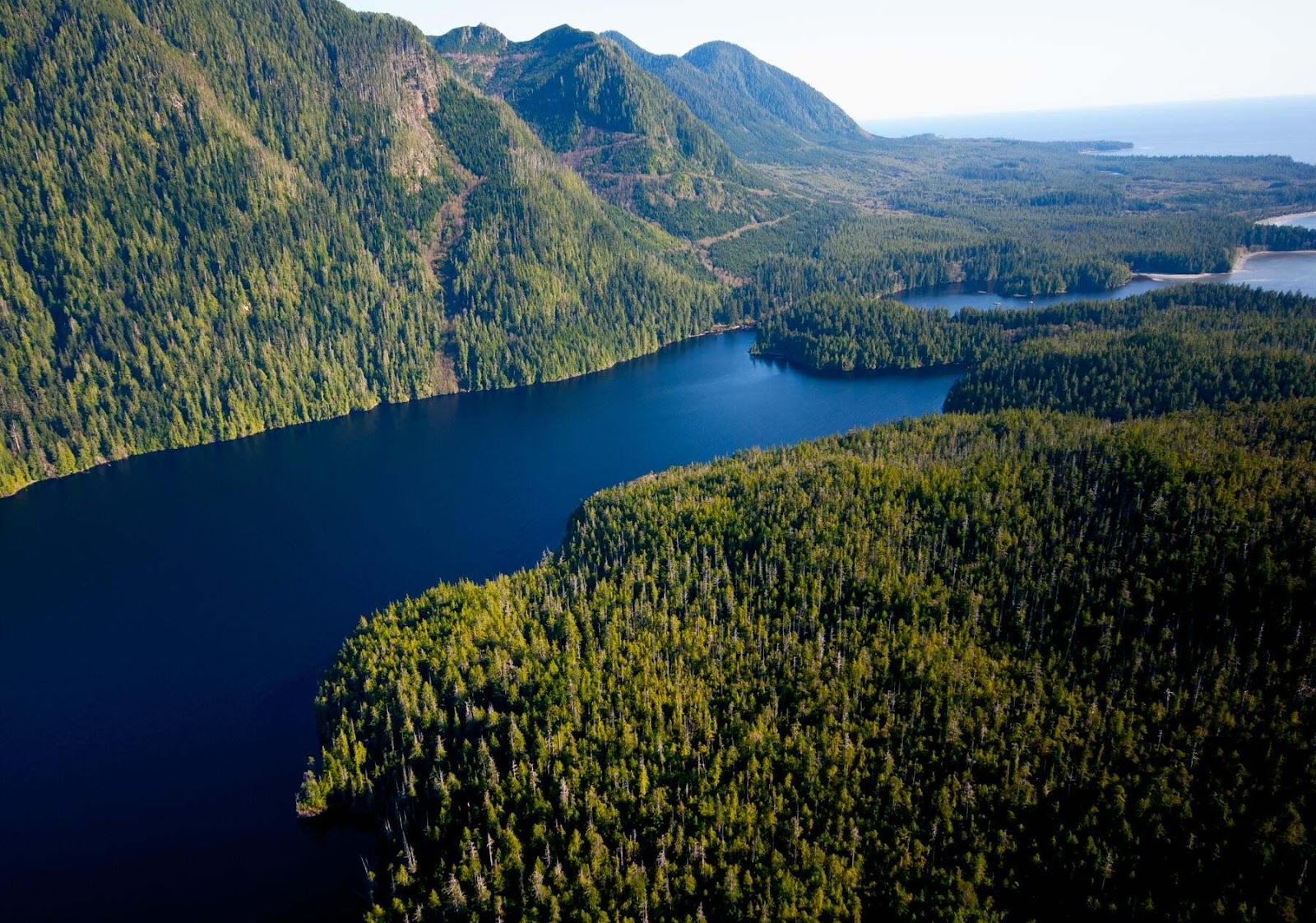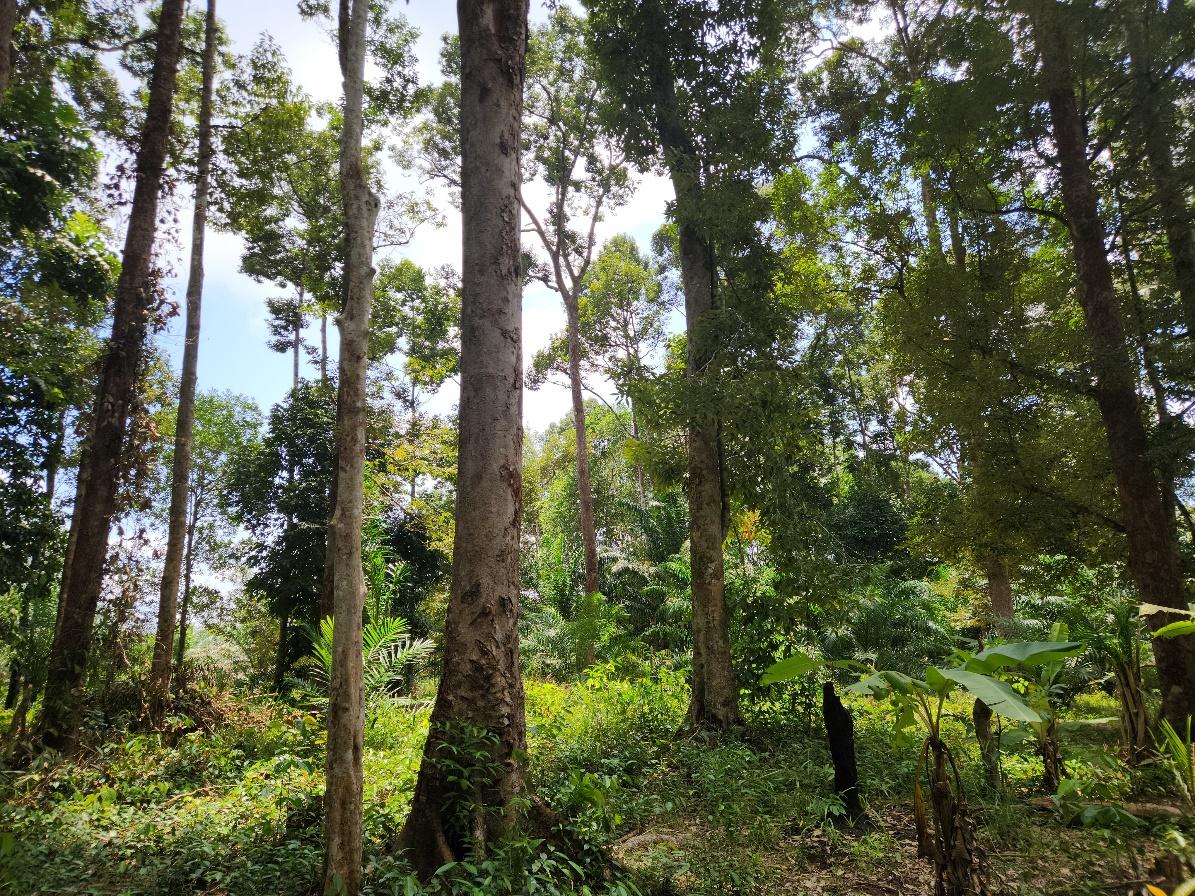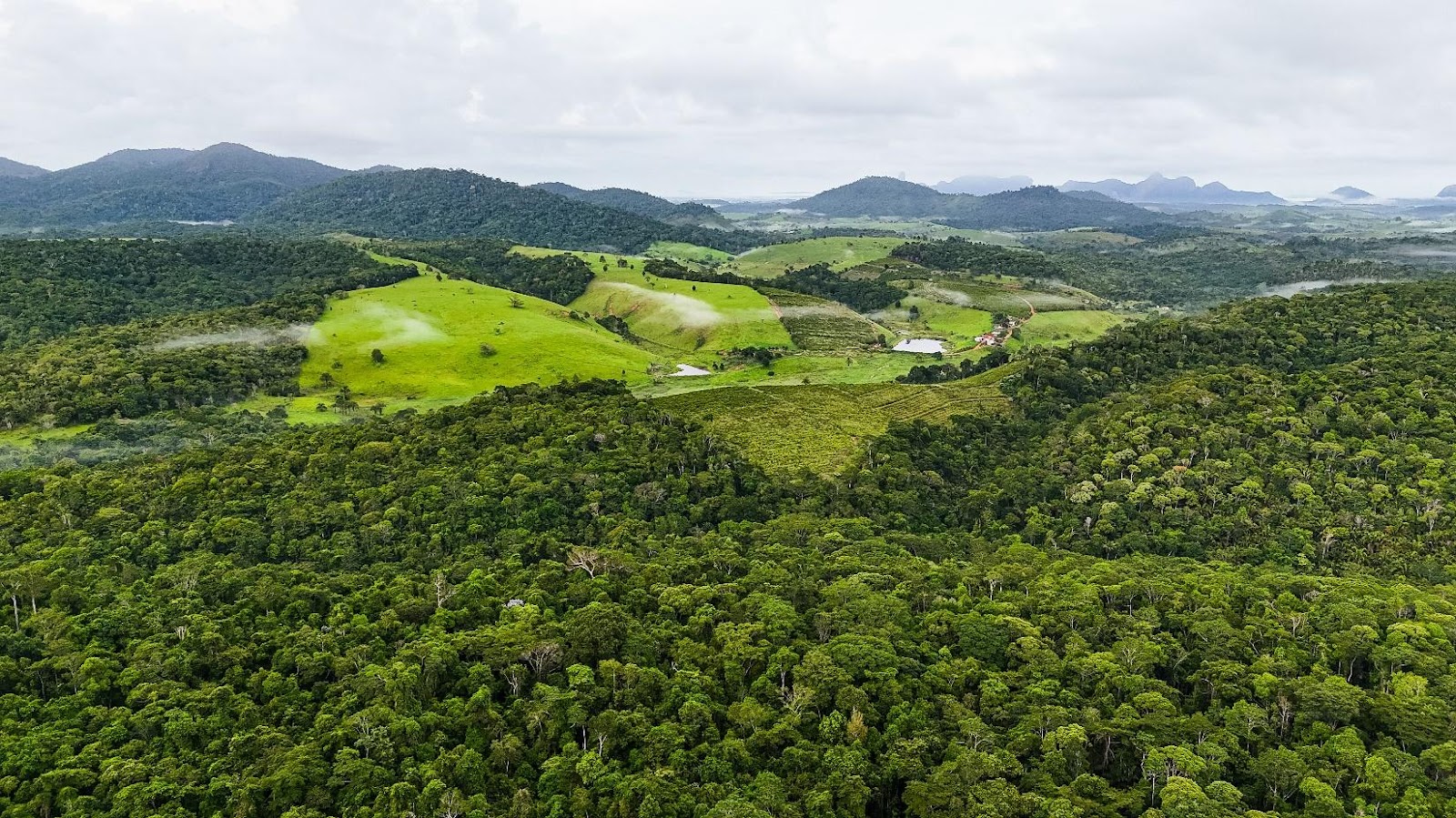At P&G, we recognize that the long-term health of natural ecosystems is important for our business, the communities we operate in, and the broader industry. This is why we partnered with Conservation International to set our science-based land target to protect, restore, or improve greater than 1.5 million acres of land by 2030. Learn more about the methodology here.
“Conservation International worked with P&G to establish the basis for their land target and develop the approach for advancing a portfolio of nature projects focused on landscapes that are relevant for P&G and have the highest value for biodiversity, carbon, and people. P&G’s land target represents the type of science-based ambitious commitments we need from companies to meet our global nature, climate, and sustainable development goals. “
Bambi Semroc, Senior Vice President, Center for Sustainable Lands and Waters
We are supporting the following portfolio of projects:
Landscape-scale conservation in the Ecuadorian Amazon
Partner- Conservation International
This project protects critical biodiversity habitats and helps increase the availability of sustainably sourced palm for all
The Northern Ecuadorian Amazon is an important landscape with native forests in a matrix of agricultural areas, including oil palm, coffee, cacao, and livestock pastures. This region is rich in biodiversity and includes well-known protected areas like Yasuní National Park. It is also home to the Kichwa, Siona, Siekopai, Shuar, Waorani, and A'i Kofán Indigenous peoples who have cared for these lands for generations. However, the area faces increasing threats of deforestation due to agricultural expansion. Conservation International is working on promoting sustainable agricultural practices, while safeguarding critical wildlife habitats. They are working with local communities and the national government to strengthen landscape governance, protect the region’s native forests and rich biodiversity, and advance the uptake of deforestation free agricultural production practices. This project is one of the three leading pilots globally implementing the Roundtable on Sustainable Palm Oil (RSPO) Jurisdictional Certification Approach. By fostering collaboration among stakeholders and prioritizing both environmental conservation and community well-being, this project aims to create a sustainable model that can be replicated in other regions facing similar challenges. Learn more here.

PHOTO CREDIT: © CONSERVATION INTERNATIONAL
Scaling Atlantic Forest Restoration
Partner- TNC Brazil
This project restores land by scaling restoration in the Atlantic Forest, benefiting local livelihoods and water supplies in the region.
The Atlantic Forest in Brazil provides abundant water that sustains millions of people in Sao Paulo, Rio de Janeiro, and Minas Gerais, while supporting agricultural production and forestry. This highly biodiverse region is home to key species such as maned wolves and ocelots. However, 80% of its native vegetation has been lost due to centuries of development and land use change. TNC Brazil is working with local communities and governments to enable cost-effective restoration of the Atlantic Forest. Learn more here.

PHOTO CREDIT: © THE NATURE CONSERVANCY
Batang Toru Forest Ecosystem Protection & Restoration
Partner- Konservasi Indonesia and Conservation International
This project protects and restores forests, improves habitat connectivity for wildlife, and safeguards the livelihoods of small-holder farmers
The Batang Toru Forest Ecosystem in North Sumatra, Indonesia, provides vital freshwater resources to local communities, supports smallholder agricultural livelihood including palm oil, cacao, and coffee, and is rich in natural resources. This landscape is a Key Biodiversity Area, home to the Critically Endangered Tapanuli orangutan and Sumatran tiger. However, parts of the forest have become fragmented, diminishing wildlife habitats and undermining vital ecosystems. The North Sumatra government is collaborating with Konservasi Indonesia, a key partner of Conservation International, to develop an integrated management plan designed alongside local communities to protect and sustainably manage the Batang Toru Forest Ecosystem. The project focuses on protecting and restoring forests, improving wildlife habitat connectivity, and benefiting smallholder farmers by safeguarding essential ecosystems important for their livelihoods. Learn more here.

PHOTO CREDIT: © CONSERVATION INTERNATIONAL
New Approaches to Forest Management in British Columbia
Partner- Nature United (TNC Canada)
This portfolio features projects led by Indigenous Nations and communities, designed to protect and improve the costal forest landscape in British Columbia, including Clayoquot Sound and Great Bear Rainforest.
British Columbia’s landscapes include vibrant coastal ecosystems, watersheds, and vast forests with rich biodiversity. The region presents a unique opportunity to advance sustainable forestry practices integrating ecosystem health, biodiversity conservation, and community well-being. Indigenous Nations and communities are at the forefront of efforts to protect these ecosystems and are working alongside TNC’s Canadian affiliate Nature United, provincial and federal governments, and industry partners to create solutions that blend conservation with local economic development. This project portfolio includes Indigenous-led landscape protection and improvement projects in the Clayoquot Sound and Great Bear Rainforest regions. These efforts aim to establish new conservation and forestry agreements on Indigenous lands while fostering collaboration with the British Columbia government for better policy alignment across the province. Learn more here.

PHOTO CREDIT: © THE NATURE CONSERVANCY
Integrated Landscape Management in West Kalimantan, Indonesia
Partner- Rainforest Alliance
This project enables community-led protection of high conservation value land, restores degraded land by planting native vegetation, and improves sustainable management of oil palm production areas.
The Ketapang region, located in West Kalimantan Province, is home to forest ecosystems that play a crucial role in water regulation and maintaining water quality important for local communities. The region supports high biodiversity, featuring populations of endangered species such as the Bornean orangutan. It is also an important palm oil production landscape and an essential area for the local economy as it supports agriculture, including agroforestry. However, the region faces high deforestation rates and recurring wildfires. The Rainforest Alliance is working to conserve and restore the forests and biodiversity in this critical landscape while supporting resilient livelihoods for smallholder oil palm farmers and local communities. This project will implement an Integrated Landscape Management strategy by partnering with local communities and governments to identify high conservation value areas and develop plans for their long-term preservation. The plan also facilitates community-led restoration of forests and promotes sustainable palm oil farming practices. The initiative aims to enhance local communities' livelihoods while safeguarding the region's rich biodiversity.

PHOTO CREDIT: © RAINFOREST ALLIANCE
Ecosystem Restoration in Bahia, Brazil
Partner- IPÊ - Instituto de Pesquisas Ecológicas
This project safeguards and rehabilitates the connectivity between protected areas in a highly biodiverse part of Atlantic Forest while advancing sustainable land use practices and improving local livelihoods.
The Central Corridor of the Atlantic Forest in southern Bahia, Brazil, is rich in biodiversity and hosts large, protected areas, including Parque Nacional do Descobrimento and Parque Nacional Histórico do Monte Pascoal. The area between these two national parks is an essential ecological passage for wildlife and encompasses timber and coffee plantations, livestock pastures, and Indigenous lands. Protecting and restoring this passage is essential for enhancing the resilience of the regional ecosystem. The Instituto de Pesquisas Ecológicas (IPÊ) is implementing the project “PROSPERA,” focused on protecting existing natural habitats, restoring ecological corridors, promoting community-led restoration initiatives, and enabling sustainable agroforestry. Learn more here.

PHOTO CREDIT: © Instituto de Pesquisas Ecológicas (IPÊ)
Longleaf Pine Restoration in the Southeast United States
Partner- Arbor Day Foundation
This project increases forest connectivity, improves biodiversity and ecosystem health, and supports local landowners.
The Southeast United States is one of the most biodiverse areas in the country and is home to the critically endangered longleaf pine forest ecosystem. This ecosystem supports threatened species like the red-cockaded woodpecker and gopher tortoise and helps maintain the quality and quantity of freshwater. It is also an important region for forestry. This ecosystem has declined significantly due to land-use changes over centuries. The Arbor Day Foundation, in partnership with regional conservation organizations and local landowners, is working to restore the longleaf pine ecosystem in the North and South Carolina Sandhills landscape to support biodiversity and enhance climate resilience.

PHOTO CREDIT: © ARBOR DAY FOUNDATION
Landscape Conservation in Peninsular Malaysia
Partner- WWF Malaysia
This project protects biodiversity, restores degraded areas, and supports local livelihoods in Peninsular Malaysia.
The Central Forest Spine of Peninsular Malaysia consists of forests spanning over 5.3 million hectares, that also provide freshwater resources and support key wildlife species. This biodiverse landscape is home to the Critically Endangered Malayan tiger. Through strategic partnerships, WWF Malaysia is implementing a conservation strategy known as the Living Landscapes initiative, balancing biodiversity conservation and economic development. The strategy includes protecting core tiger habitats from poaching, restoring degraded lands to increase connectivity between large forest landscapes, and supporting the sustainable production of palm and other commodities to prevent further deforestation and degradation.

PHOTO CREDIT: © WWF-Malaysia
ADVANCING NATURAL CLIMATE SOLUTIONS
P&G is supporting a portfolio of Natural Climate Solution projects to balance any remaining greenhouse gas emissions from our manufacturing operations that we do not eliminate this decade. To do so, we are partnering with Conservation International, The Nature Conservancy, and other organizations to advance a portfolio of projects designed to protect, improve, and restore critical ecosystems, and deliver benefits to climate, people, and biodiversity.
Learn more about P&G’s holistic climate strategy here
We are supporting the following portfolio of Natural Climate Solution projects:
Protecting a vital rainforest in Northern Belize
Partner- The Nature Conservancy
This project protects the Selva Maya Forest in Belize and secures crucial biodiversity habitat.
The Belize Maya Forest is part of a tropical forest network called the Selva Maya, which is the second-largest rainforest in the Americas. This region supports over 400 bird species and 70 mammals, including the largest population of jaguars in Central America. Expanding agriculture poses a significant risk of deforestation in this ecosystem. The Nature Conservancy has been working to protect the Selva Maya since 1995. This project enables an additional 236,000 acres of Belize Maya Forest to be protected, ensuring the long-term conservation of this critical land and its biodiversity. Learn more here

PHOTO CREDIT: © THE NATURE CONSERVANCY
Mantalingahan Landscape Conservation
Partner- Conservation International
This project helps conserve biodiversity and supports sustainable livelihoods for people in the highly biodiverse Mount Mantalingahan Protected Landscape, Philippines.
The highly biodiverse Mount Mantalingahan Protected Landscape in southern Palawan, Philippines, is home to over 1,000 species, including the threatened Palawan pangolin and Palawan eastern frog. This region's rich ecosystems are vital to more than 12,000 Indigenous Palaw’an people, who rely directly on nature for their livelihoods and are among the world's most climate-vulnerable communities. Despite its protected status, the Mantalingahan Landscape faces significant threats from deforestation and forest degradation. Conservation International is working with local communities, government institutions, and civil society organizations on the Mantalingahan Landscape Conservation Project. The project aims to empower Indigenous and local communities to maintain the health of ecosystems by supporting community conservation plans, protecting and restoring forests, and promoting sustainable resource management. Learn more here

PHOTO CREDIT: © CONSERVATION INTERNATIONAL
Central Cardamom Mountains Landscape Conservation
Partner- Conservation International
This project helps conserve biodiversity and supports sustainable livelihoods for people in the Central Cardamom Mountains Landscape, Cambodia
Cambodia's Central Cardamom Mountains Landscape includes intact forests and other diverse ecosystems that provide critical habitat for over 500 species, including the Asian elephant and the clouded leopard. Local and Indigenous community members depend on this landscape for their livelihoods, as it also serves as a watershed, providing fresh water to thousands of people in Cambodia. Despite its relatively intact status, the Central Cardamom Mountains face increasing threats from illegal logging and wildlife poaching. Conservation International is collaborating with the Ministry of Environment of Cambodia, local communities, and other partners on the Central Cardamom Mountains Landscape Conservation Project to ensure ongoing protection of the area. This initiative aims to reduce the drivers of deforestation by enhancing protected area management, improving biodiversity monitoring and protection, and developing sustainable livelihoods and funding sources for the Indigenous communities. Learn more here

PHOTO CREDIT: © CONSERVATION INTERNATIONAL
Restoration and Conservation of the Awajun Forests of Alto Mayo Peru
Partner- Awajun Indigenous Federation of Alto Mayo and Conservation International
This project promotes sustainable economic activities and conserves biodiversity in the Awajun territory, Peru.
The Awajun territory is within the Alto Mayo landscape in the San Martin region of Peru. This region in the Amazonian rainforest hosts more than 1,200 native plant species and numerous birds, mammals, and reptiles, including 27 species new to science, making it critical for biodiversity conservation. The territory faces deforestation from expanding agriculture and timber harvesting. Awajun Indigenous Federation of Alto Mayo and Conservation International, Peru are working with Awajun communities to halt and reverse deforestation through the Tajimat Pujut project (which translates to “Good Living”) covering 231,000 hectares. This project focuses on forest conservation through income diversification while supporting cultural ties between the Awajun people and their land.

PHOTO CREDIT: © CONSERVATION INTERNATIONAL
Improving Forest Ecosystems Through Innovative Forest Management
Partner- Conservation International
This project improves forest sustainability, enhances carbon stores, and supports local communities in the Peruvian Amazon by reducing the density of overgrown vines
The Peruvian Amazon is crucial for sustaining local livelihoods and supports important biodiversity, including several endemic and endangered species. The practice of extracting individual high-value trees for timber, rather than full deforestation, has led to overgrowth of woody vines, called lianas, which results in reduced growth and reproduction of trees. This contributes to adverse forest integrity and socioeconomic outcomes. The Antami-LIFT Project led by Conservation International will address this by reducing the density of lianas to enhance tree growth and increase carbon storage. The project creates the opportunity for new local jobs and increases forest productivity, thus reducing the need to convert forests to other land uses.

PHOTO CREDIT: © CONSERVATION INTERNATIONAL
Sustainable Management of the Greater Mara Ecosystem in Southwestern Kenya
Partner- Maasai Mara Wildlife Conservancies Association, Ahueni AG, and Conservation International
This project aims to protect the Greater Mara Ecosystem while providing economic and social benefits to local communities in Southwestern Kenya
The Greater Mara Ecosystem in Southwestern Kenya is a critical landscape for the local Maasai communities who have been living in the region for centuries and rely on pastoralism and, more recently, tourism for their livelihoods. It is a vital biodiversity landscape, home to species like black rhinoceros, lions, and cheetahs, and part of the iconic "Great Migration" of wildebeest, zebras, and other large herbivores in the Mara Serengeti. The landscape faces challenges such as degradation and fragmented habitats due to unsustainable land management practices. The One Mara Carbon Project, led by the Maasai Mara Wildlife Conservancies Association, Ahueni AG, and Conservation International, addresses these issues by improving livestock management, implementing restoration activities, and facilitating the creation of new conservancies. Maasai landowners are at the center of the project, with community governance structures being established to ensure the project’s long-term sustainability and impact. These combined efforts will increase soil organic carbon stocks, improve livestock conditions, enhance biodiversity, and increase landscape connectivity for wildlife, benefiting both the environment and local communities.

PHOTO CREDIT: © CONSERVATION INTERNATIONAL